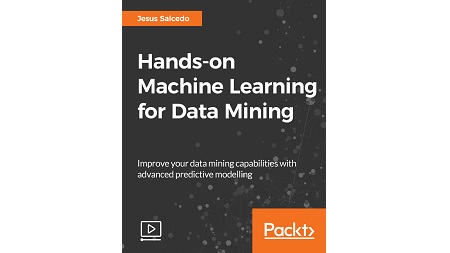
English | MP4 | AVC 1920×1080 | AAC 48KHz 2ch | 2h 44m | 875 MB
Get efficient in performing data mining and machine learning
30% of data mining vacancies also involve machine learning. And those that do are 30% better paid than the rest. If you’re involved in data mining you need to get on top of machine learning, before it gets on top of you.
Hands-On Machine Learning for Data Mining gives you everything you need to bring the power of machine learning into your data mining work. This video course will enable you to pair the best algorithms with the right tools and processes. You will see how systems can learn from data, identify patterns and make predictions on data with minimal human intervention.
This is an application-oriented course and the approach will be practical. This course will discuss the situations in which you would use each data mining technique, the assumptions made by the method, how to set up the analysis and how to interpret the results. No proofs will be derived, but rather the focus will be on the practical matters of data analysis in support of improving predictive models.
What You Will Learn
- Explore the lethal combination of Data Mining and Machine Learning to hone your model-building skills and improve your models
- Understand the inner workings of your models
- Get to grips with three ways in which you can decipher how machine learning models can be interpreted
- Derive worthwhile insights from your data by developing efficient predictive models to predict future results accurately
- Maximize your productivity by analyzing your models and interpreting their accuracy in a well organized manner
- Combine the results of two or more models
Table of Contents
The Course Overview
Characteristics and Examples of Machine Learning Models
Working with Neural Networks: Theory
Working with Neural Networks: Demonstration
Working with Support Vector Machines: Theory
Working with Support Vector Machines: Demonstration
General Model Interpretation
Using Graphs to Interpret Machine Learning Models
Using Statistics to Interpret Machine Learning Models
Using Decision Trees to Interpret Machine Learning Models
Modifying Model Options
Using Different Models
Removing Noise
Doing Additional Data Preparation
Balancing Data (Over/Under Sampling)
Combine Models
Propensity Scores
Meta-Level Modeling
Error Modeling
Boosting and Bagging
Continuous Outcomes
Resolve the captcha to access the links!